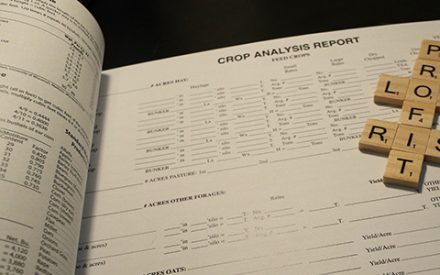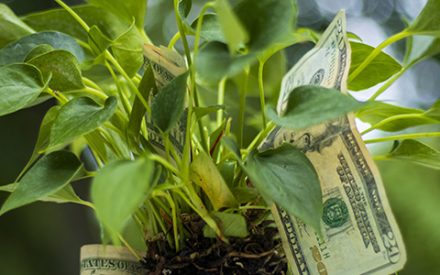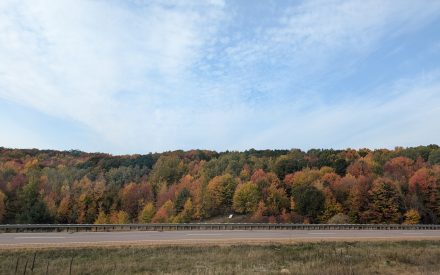Video Summary
In this video, Dr. Luiz Ferraretto, associate professor and extension ruminant nutrition specialist at UW–Madison, shares expert insights on optimizing the nutritive value of corn silage to support dairy cow performance.
This presentation covers key factors such as kernel processing, harvest maturity, fiber digestibility, and the impact of cutting height. Learn how to balance forage quality and yield, evaluate starch availability, and explore alternatives to BMR hybrids. Practical tools and data-driven strategies are discussed to help growers make informed decisions for silage management.
Resources
Transcript
0:05
So good afternoon everyone.
0:06
Thanks for having me.
0:08
I think the goal now is to discuss a little bit about some of the practice that we can utilize to make sure we optimize the quality of our corn silage and make sure that the cows can properly perform based on that, right?
0:25
And obviously when it comes to corn silage, there are a lot of information that we have to take into consideration, right?
0:31
Especially because whenever we are growing, harvesting, feeding corn silage, there are two very different fractions there that have to be considered and play a major role on how the cow will digest and utilize those nutrients, right?
0:48
One would be the kernel fraction which is very rich in starch and the other part would be the overall plant, right?
0:55
The other parts of the plant which basically provide the sole necessary fiber to keep the rumen function and also energy to the dairy cow, right?
1:07
When it comes to the kernel fraction, obviously starch is almost 100% digestible, but there is still some variation on the degree of the digestibility.
1:18
And some of the key factors that we have to pay attention to would be how well we are breaking kernels, right?
1:25
The degree that we are breaking those kernels, how long can we allow our corn silage to ferment before I start feeding to the dairy cows. maturity at harvest, which also plays a role on fiber digestibility.
1:39
And then we also have some discussions about endosperm properties.
1:43
I think this is less important than the other three factors that we just discussed. When it comes to the fiber digestibility aspect of corn silage.
1:56
Basically we are talking about the ratio between lignin and NDF, right?
2:00
So the more lignin we have in a plant related to NDF, less digestible that plant will be, right?
2:08
And obviously the key ways that we have to modulate that fiber digestibility would be selecting hybrids, right?
2:15
You just saw some discussion about that today, maturity at harvest and then chop height, which you also saw some data earlier today.
2:24
But one thing that you always have to remember about fiber digestibility is that that is what drives intake.
2:31
So if you have a huge dry matter yield, but that fiber digestibility is low, the cow is not going to eat.
2:41
So does not matter to have forage inventory because your milk production still goes down, right?
2:46
The problem is whenever we try to improve fiber digestibility, we have to make a trade.
2:53
We will be trading quantity for quality.
2:57
So you have to be very careful when you do that because you want to make sure that you have enough forage inventory, right?
3:04
So not easy decisions, but regardless of what you decide to do, that’s how it works, OK.
3:10
I think short corn may be something slightly different based on what we saw earlier today, but it’s also something very new that we are learning about, right?
3:20
There are not many feeding trials that we could be based on for example, right?
3:26
So if you think about corn silage nutritive value, obviously we want to improve all aspects of that, right?
3:32
So our goal is to reduce the indigestible fraction of corn which is UNDF or lignin, OK.
3:38
UNDF is the terms nutritionist like more nowadays because you can be using different softwares for prediction with intake.
3:47
So better than lignin for that purpose specifically, OK, But there are other things that we have to consider, right?
3:55
NDF digestibility nutritionists often use 30 hours.
4:00
Agronomists probably tend to use more the 48 regardless of what you use.
4:05
We want to improve those numbers, right?
4:07
Obviously we want to make sure we have enough starch in the corn silage.
4:11
Although I think we are reaching a point where we have to be careful with the amount of starch because the starch sometimes is higher than NDF in corn silage, which makes very difficult to continue to add more corn silage to the diet.
4:25
And obviously you saw some numbers about that earlier today as well.
4:29
We use the milk per ton as a metric, OK.
4:31
Here is just a simple description of how we see the indicators for better quality of corn silage as well as the normal range for those values in a very large data set that we put together last year when we were working with the milk per ton updates.
4:50
But let’s go back a little bit to some of the practice, right?
4:53
I think for a couple of those, I’ll go very briefly and for others, I’ll go over a little bit more in depth.
4:58
But if you think about processing, I think is a very simple response right. Here we have the relationship between kernel processing score, which is basically the assay that we used to estimate how well were we breaking kernels right in corn silage versus fecal starch, which is basically tell us how well cows are utilizing that starch, right?
5:20
Everything that leaves in the manure, it means that we didn’t do a good job making sure that was available to the cow.
5:26
And you can see that the Gray bars here are kernel processing score, and the black bars would be fecal starch.
5:34
And it’s a negative relationship.
5:35
So the worse the kernel processing, more likely the cows will end up with higher fecal starch, which means that very likely you’re going to see drops in milk production because the starch provides a lot of the energy that we need for the cow.
5:50
The problem with kernel processing is that it’s affected by many things, right?
5:54
The processor, the settings associated with the processor, but also other key factors like maturity, right?
6:02
And why is that?
6:03
Well, basically the way kernel the kernel works is as the kernel matures or as the kernel accumulates dry matter, it gets more vitreous, right?
6:15
If you’re not familiar with vitreousness, it’s basically the proportion of that vitreous endosperm to the floury endosperm.
6:23
In another words, those are, this will be the proportion of the very hard endosperm to the very soft endosperm.
6:32
What does that mean for processing?
6:34
That means that the harder the kernel is more difficult to break, and then consequently you may end up with more fecal starch.
6:42
Why is that important?
6:43
That’s important because we need to pay very close attention to maturity or moisture or dry matter at harvest, right, Depending on how you measure.
6:52
And I think you saw some very nice discussion that Liz put together about we should be measuring not only plant moisture, but also kernel milk line, right?
7:01
I think that we have to take that into consideration and I think that there are a lot of evidence to that.
7:08
So let’s dig a little bit into some information and this comes from the the data set that Liz was presenting and and basically why is that important?
7:19
So what I did is I collected our 2024 data and I used the the three kernel milk line metrics that we had there.
7:27
You had a couple other descriptions that I ended up now using.
7:30
But if we use the one quarter, half and 3/4 here, OK, you can see that the differences in average of the dry matter is not too different, right?
7:41
But look the minimum and maximum within each of those.
7:47
So basically what I’m telling you is you may have the perfect kernel milk line and the dry matter is not perfect.
7:54
If we summarize the other way around, it’s true as well, right?
7:58
What does that mean?
7:59
That means that we have to pay close attention to both so we can make the best informed decision of when is appropriate to harvest.
8:07
OK.
8:07
And just to to add a little bit of more information to this data, on the right side, we have the distribution of those samples.
8:16
So that’s the percentage of samples within one of those 3 categories, one quarter, 1/2 or 3/4 of the kernel milk line and where they are within lower than 30% dry matter, between 30 and 35% dry matter 35 and 40 or more than 40, right?
8:37
And you can see that there is an interesting pattern, right?
8:39
The one quarters have way more immature samples with lower dry matter.
8:43
And then as you get to the 3/4, you have way more mature samples as you can see that the distribution goes more towards the dryer samples, right?
8:52
But still, you have to pay close attention because there’s a lot of variation within fields across fields and you need to make sure you account for both dry matter and kernel milkine, right?
9:03
A couple things to consider associated with that is, again, maturity.
9:09
So here are my starting points for corn silage harvest.
9:13
By no means this is the perfect way of doing corn silage is just how I like that based on a lot of scientific information and he provides a good starting point, right?
9:23
So the way I see you have to target for 33 to 37% dry matter between 2/3 to 3/4 of kernel milk line.
9:31
So you can maximize that starch but not have the kernel hard enough that you will compromise processing.
9:37
And obviously he has to be adjusted based on plant health, right?
9:42
For kernel processing, the goal is to have very tight processor because you want to make sure you break those kernels.
9:50
Obviously there is variation from harvester to harvester, types of processor, theoretical length of cut and so on, but this is a good way of starting.
9:58
But more important than that, you have to check and adjust as you harvest corn silage.
10:03
This is also true for chop length.
10:06
So keep in mind that the drier the corn silage is shorter.
10:11
You should harvest that and very likely with a tighter kernel processor to make sure that you break more kernels, OK, if you were dry harvesting too early, very likely want to open a little bit the kernel processor as well as increase a little bit the chop length, right?
10:27
But shifting gears, I want to go back to the discussion about chop height and show you a little bit of some of our numbers and why that could be a reasonable tool to replace the the lack of BMR now, right?
10:42
Because I do think that we have to continue to focus on fiber digestibility have implications on intake implications on in milk production, but also has implications to feeding behavior of dairy cows, right.
10:56
So we have to pay close attention to that.
10:59
So to complement what Harkirat presented here are some of the values for NDFD and lignin concentration of different plant parts, OK.
11:09
So you can see that as you increase that the plant parts or as you go up within the corn plant, you can see that you have greater digestibility and lower concentration with lignin, right?
11:21
That’s why often we discuss about the potential of increasing a little bit the chop height.
11:27
Also, you can see that you have less lignin in the leaves and obviously much higher digestibility.
11:35
So you are diluting that much more digestible material less, right, with the stalk portions that are less digestible, right.
11:44
So if we think about a simple comparison, basically we know that at the end of the day, if you increase chop height, you’re gonna increase NDFD, you’re gonna increase starch, which doesn’t happen with BMR, BMR has lower starch than conventional, OK, but these are the expense of yield per acre, OK?
12:05
So the real question is, can you afford that?
12:08
Is it a good, a good tool for you, for your herd, for your customers?
12:13
And that’s not an easy task to to determine, right?
12:17
But at the end of the day, our goal is to make sure the cows consume more and produce more milk.
12:22
And if you go through some of these numbers here, there are not many studies with chop height that were tested when fed to dairy cows, OK, Those are the four published studies that are out there.
12:35
And you can see that it’s 50/50, right?
12:37
Two studies show very good results and two studies did not show any results, OK, which show that there are some sort of variation out there when testing for chop height.
12:49
And I think that’s quite important because we need to understand that and make sure that we know when is worth increasing cutting height, chop height, right.
12:58
But if you get this last study here, the the increases are quite considerable similar to what we see for some of the bit similar but still a little bit lower than what we see for some of the BMR feeding trials, which is quite consistent in improving intake in milk production.
13:16
So because of that, we try to estimate what is the impact of that and Harkirat show the spreadsheet that Cole my previous PhD student put together and this is the basis for that, OK?
13:30
This is what is expected for those different nutrients as well as dry matter yield for every 10 inches that we increase in chop height, OK.
13:39
And if you want to test that, we have a tool out there.
13:43
We just released this spreadsheet here somehow I copied the I took a print screen of the metric version.
13:51
But we do have the imperial units as well.
13:53
So we can use inches and tons per acre and everything that you are used to.
14:00
OK, but you can estimate based on a normal corn silage sample and knowing what your normal chop height is, what is going to happen when you increase the chop height, Okay.
14:12
And then if you have the typical yield and the typical cost per acre is gonna also show you the cost of the new corn silage that you have, okay?
14:24
What this tool does not do is we do not account for the reduced cost you have in the diet related to the other ingredients.
14:32
You don’t have to add.
14:34
For example, if you increase chop height, you have more starch, you need to add less corn to the diet, right?
14:39
So I’m not accounting for that with this tool
14:42
OK.
14:42
So keep that in mind cuz it’s just an estimate, but there are other things that have to be taken into consideration.
14:50
So some simple conclusions for our discussion here.
14:53
Kernel processing, maturity, harvest and fermentation, they all play a major role in stars stability and consequently the energy availability to the cow.
15:03
OK, using a combination or of moisture or dry matter, depending on how you work with OK and kernel milk line is advised because as you could see, there is a lot of variation between those.
15:16
So it’s not like we know that 35% dry matter matches exactly the 2/3 of kernel milk line, OK?
15:23
Nowadays we don’t know that.
15:24
So we have to be very careful because you don’t want to end up with very dry or very wet material because of fermentation issues, but you also don’t want to end up with very hard kernels that you cannot break at harvest, OK?
15:38
You also don’t want a miss on starch, right?
15:41
Hybrid selection, chop height and maturity impact fiber digestibility, but that happens at the expense of yield, so you have to do that carefully because at the end of the day you still want to make sure you have enough forage inventory to feed your cows.
15:56
I do think chop height is an interesting option to replace the effects of BMR, but does not have the same magnitude on NDFD that BMR has.
16:06
OK.
16:07
I think that it’s a great opportunity in years that we have very high yields or for those of you that like planting corn with very high plant populations, which could mitigate a little bit the negative effects on the dry matter yield that you’ll be harvesting.
16:25
Said that to like to thank you again for the opportunity of being here and I’ll be glad to answer any questions if we have any.
16:35
Thank you, Luiz!
Badger Crop Connect
Timely Crop Updates for Wisconsin
Second and fourth Thursdays 12:30 – 1:30 p.m.
Live via Zoom

 ▶ Fall 2025 Financial Assistance for Producers
▶ Fall 2025 Financial Assistance for Producers ▶ Fall 2025 Ag Policy Update
▶ Fall 2025 Ag Policy Update ▶ Fall 2025 Corn and Soybean Market Outlook
▶ Fall 2025 Corn and Soybean Market Outlook ▶ November 6 Ag Weather Outlook for Wisconsin
▶ November 6 Ag Weather Outlook for Wisconsin


